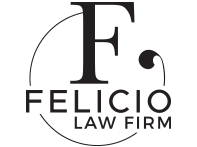
Buying a liquor shop in New South Wales (NSW) is a significant undertaking, and it’s essential to approach the process with a clear understanding of the legal, financial, and operational requirements. The liquor retail industry is highly regulated, with strict laws governing everything from licence transfers to staff management and business operations. Failure to comply with these regulations can lead to severe penalties, including fines of up to $11,000 for breaches of liquor licensing laws.
Whether you’re an experienced business owner looking to expand or a newcomer to the retail sector, this guide provides valuable insights into the essential steps involved in purchasing a liquor shop in NSW.
Licence Transfer Process
One of the first and most critical steps in buying a liquor shop is ensuring that the liquor licence is successfully transferred to you. This process can be complicated, and there are specific steps you must follow to comply with the law. Depending on the situation, you may need to transfer the licence either with or without the consent of the current licensee.
With Consent Transfer
This is the more common method of transferring a liquor licence when buying a liquor shop. The process involves obtaining written permission from the outgoing licensee and submitting an application to the NSW Liquor & Gaming. Here’s what you need to know:
- Written Permission: You’ll need written consent from the current licensee for the transfer to proceed.
- Discounted Submission: If you submit the transfer application online, you’ll receive a 10% discount on the associated fees.
- Documentation Requirements: You will need to complete and submit two important forms: the TDEC1 (existing licensee declaration) and TDEC2 (proposed licensee declaration).
- Approval Timeline: Once submitted, provisional approval is typically granted within four weeks, with final confirmation expected within 60 days.
Without Consent Transfer
In some situations, you may have to proceed with a transfer without the outgoing licensee’s consent, such as when the business owner has failed to comply with their obligations or when there is a dispute. This approach is somewhat more complex and requires:
- Notification: You must notify the outgoing licensee via registered post or email about your intention to transfer the licence.
- Evidence of Ownership: To proceed, you’ll need to provide evidence that you either own or lease the premises, such as a lease agreement, rates notice, or title documents.
- Additional Declaration: A TDEC3 form (owner in possession declaration) must also be completed.
In both cases, it’s advisable to consult with a legal professional to guide you through the process and ensure all legal requirements are met.
Documentation Requirements
Transferring a liquor licence entails considerable documentation. To facilitate the process, you’ll need to prepare various documents, including:
- Current RSA Qualifications: All staff members involved in the sale of alcohol must hold a Responsible Service of Alcohol (RSA)
- NSW National Police Certificate: You must provide a police certificate for all individuals applying for the licence. The certificate must be dated within three months of submission.
- ASIC Extract for Corporate Licensees: If you’re purchasing the liquor shop as a company, you’ll need to provide an Australian Securities and Investments Commission (ASIC) extract for the corporate licensee.
- Gaming Machine Forms: If the liquor shop includes gaming machines, you’ll need to submit direct debit and monitoring forms.
- Completed Declaration Forms: Depending on the type of transfer, you’ll need to provide the appropriate declaration forms to confirm your eligibility to hold a liquor licence.
- Proof of Ownership or Lease Rights: You must demonstrate that you have legal rights to occupy the premises, either through ownership or a lease agreement.
Business Continuity
An advantage of the current licensing system is that you can continue operating the business under provisional approval while the final transfer of the liquor licence is processed. However, this requires that you:
- Submit a Complete Application: Ensure your application for the liquor licence transfer is thorough and complete to avoid delays.
- Meet Eligibility Criteria: You must meet all eligibility criteria set out by the NSW Liquor & Gaming, such as having the necessary qualifications and financial standing.
- Payment of Fees: Ensure that all applicable fees are paid promptly to avoid delays in processing your application.
- Notification to Relevant Parties: You’ll need to notify various parties, including the outgoing licensee and local authorities, to ensure transparency and compliance.
Operational Requirements
Once the licence transfer is complete, you’ll need to operate your liquor shop in compliance with a range of legal requirements. The ongoing operational requirements are stringent, and failure to meet these obligations could result in penalties or even loss of licence.
Staff Management
One of the primary operational obligations when buying a liquor shop is ensuring that your staff are properly trained and compliant with all regulations:
- Age Requirements: All staff involved in the sale or supply of alcohol must be at least 18 years old.
- RSA Certification: Every employee must hold a valid Responsible Service of Alcohol (RSA) certificate.
- Age Verification: Your staff must implement age verification processes for customers purchasing alcohol, including checking IDs when necessary.
- Training in Intoxication Assessment: Staff must be trained to assess intoxication levels and refuse service to individuals who are drunk.
- Clear Refusal of Service Policies: You must have a well-documented and clear policy in place for refusing service to intoxicated customers.
Compliance Systems
Maintaining compliance with the law requires implementing a range of systems and processes in your liquor shop:
- Age Verification: This should apply to both in-store and online sales, ensuring that no underage individuals can purchase alcohol.
- CCTV Monitoring: You will need to install a CCTV system to monitor premises for security and compliance purposes.
- Incident Reporting: A formal incident reporting procedure should be in place to document any breaches of liquor laws or disputes with customers.
- Stock Management: Proper stock management and labelling are essential to comply with consumer protection laws.
- Trading Hours Monitoring: Ensure that your business operates within the allowed trading hours for liquor sales, as specified by the licence.
- Delivery Protocols: If you offer home delivery of alcohol, ensure that all relevant protocols for safe and legal delivery are in place.
Contract Protections
When buying a liquor shop, your purchase contract should include a number of protections to ensure that you are fully informed and protected throughout the transaction:
Essential Warranties
These warranties should cover the following areas:
- Licence Compliance: The current licensee should guarantee that the liquor licence is in good standing, without any legal issues or breaches.
- Staff Qualifications: The vendor must provide verification that all staff meet the RSA requirements.
- Trading History: The vendor should provide accurate and complete information about the trading history of the business.
- Stock Valuation: A formal stock valuation should be included to avoid disputes later.
- Equipment Ownership: Ensure that the equipment in the business is owned outright or appropriately leased.
- Absence of Penalties: There should be a warranty that there are no undisclosed penalties or legal actions against the business.
Additional Protections
In addition to the essential warranties, your contract should also address other protections, such as:
- Non-Competition Clauses: Prevent the seller from opening a competing business nearby.
- Training Period: Negotiate a training period to ensure a smooth transition and retention of key staff.
- Supplier Relationship Transfers: Ensure that any key supplier relationships are transferred or protected.
- Social Media and Online Presence: Ensure that the vendor transfers ownership of any relevant online assets, such as social media accounts and website domains.
Risk Management Strategies
Effective risk management is essential to running a successful liquor shop. Some strategies include:
Legal Compliance
- Regular Licence Reviews: Continuously review your liquor licence conditions to ensure compliance.
- Staff Tracking Systems: Maintain a system to track staff certifications and renewals.
- Incident Documentation: Ensure incidents are thoroughly documented for legal and insurance purposes.
Business Protection
- Insurance Coverage: Review your insurance coverage to protect against potential risks such as theft, fire, or liability claims.
- Security Systems: Regularly assess and update your security systems to protect both staff and stock.
- Local Area Management: Understand local area regulations and community concerns to maintain good relations and avoid potential conflicts.
Financial Considerations
When buying a liquor shop, it’s important to evaluate the financial aspects carefully:
Purchase Price Components
- Assets: This includes physical assets at book value and the stock at an agreed valuation.
- Goodwill: This is calculated based on factors like location, trading history, customer base, and the business’s compliance record.
- Licence Transfer Costs: Factor in the costs associated with transferring the liquor licence.
Ongoing Operational Costs
- Staff Training: Regular training and certification costs are an ongoing expense.
- Security Maintenance: Ongoing security system costs are important for protecting your business.
- Compliance: Ensure you budget for the cost of ongoing compliance with regulatory requirements.
Conclusion
Buying a liquor shop in NSW involves more than just financial investment—it requires careful attention to legal, operational, and compliance factors. Thorough due diligence, structuring a solid purchase agreement, and ensuring your business is compliant with all regulations are key to success. Seeking expert legal advice throughout the process can help protect your investment and ensure smooth operation.
We Offer Expert Legal Help
Our team of experienced Business and Conveyancing Lawyers Central Coast can help you navigate the complexities of buying a liquor shop. We can assist with:
- Preparing and submitting licence transfer applications
- Completing required declaration forms
- Ensuring all documentation meets regulatory requirements
- Negotiating with current licensees or premises owners
- Structuring the purchase to protect your interests
- Establishing compliance systems for ongoing operations
Maximise your investment’s security with professional support. Contact us today!













